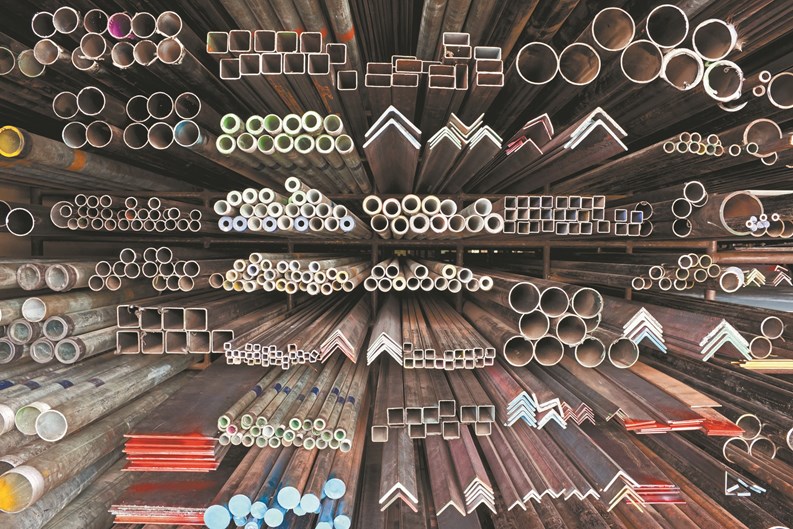A condo is only as strong as its metaphorical foundation – the people who live there, in other words – and their dedication to building a vibrant, functional community. But the literal, physical components that comprise the structure are vital too, of course. Sometimes large components like a facade or a building envelope can feel like an ‘out of sight, out of mind’ concept until a major capital improvement project is due, but materials, technology and ideas are constantly evolving. Condo boards, denizens, and developers should all be aware of what’s new and notable.
To zero in on just one aspect of construction and maintenance that’s on everyone’s mind as fall turns to winter, it’s worth taking a look at materials, methods, and technologies aimed at helping multifamily buildings optimize their energy efficiency – both to save money, and to minimize their impact on an already-stressed environment.
The Built Environment
Of all the various concerns regarding the constitution of a property, one particular issue stands above most others: water infiltration, in all its nefarious forms.
“Ninety percent of all problems – and that might be a low estimate – in the built environment are associated with water, in one form or another. So it’s all about the building envelope, and that’s where a lot of effort is being spent; to keep those intact,” says Jack Carr, a senior vice president at Criterium Engineers in Portland, Maine. “A lot of architects want to get into fancy new facade materials – there are all kinds of things going in the market. But at the same time, in conflict or parallel to that, buildings are being made tighter and more insulated because of energy code requirements that are being forced upon the industry all the time. The result is a conflict between what people would like to do with their facades, and what can be done to keep water out of the building. So it’s all about keeping materials that are dissimilar from allowing moisture, air infiltration, or water vapor infiltration to penetrate the envelope of the building, either from the roof level, the sides, or even underground.
“And meanwhile,” he continues, “whether anyone wants to talk about it or not, you have climate change going on – and with climate change, the different design criteria in different parts of the country keep modifying. Trends move north, because north is going to be the new south. Nobody used to have air conditioning in condos in Maine or in Minnesota 20 or 30 years ago – you were dependent on mountain or sea breezes. However, today’s all-new inventory of condos all have AC. So it creates a disparity in the real estate market between the old and new condominiums. How do you convert the existing building, with all its flaws, to put in modern HVAC systems that would meet today’s market requirements? That’s why there’s a big push to put mini-splits in retrofits; because they don’t cause much of a disruption to the common elements. The board doesn’t want to damage those common elements, while unit owners are trying to get themselves air conditioned. There are a lot of interesting dynamics going on today in condo building, with people trying to balance out their needs for a controlled environment.”
Making Life Easier
While aesthetic considerations are certainly made in construction today, many trends in multifamily building are focused on making the hectic lives of residents a little easier – function over form, if you will.
“A lot of the buildings we work on are multi-story properties, and we find that people are interested in having a view,” notes David Goldman, Executive Vice President and Chief Operating Officer at Belgravia Group, Ltd., a real estate firm in Chicago. “They like a lot of glass, motorized window shades that can be used to help control temperature, help control the lifestyle. Integrating lighting controls, as well. These are growing increasingly popular.”
It’s becoming increasingly clear that what people are after is ownership over the minute details. “People like that ease,” Goldman explains. “They want everything adjustable via wi-fi, so that even when they’re at work or they’re out of town, they can adjust things from their smartphones. We’ve seen a big rise in giving people access to their apartments when they’re not home.”
Getting into specific exterior facade materials, Goldman notes that of late, they’ve been exploring things like metal panels or fiber cement panels, and finding creative ways to use them. “We do it for two reasons,” he says. “One is that it looks good, and another is that, whatever material you use, you have to use it to its intrinsic properties in order to make it cost effective. Using metal panels and designing the building to the size of the panels, rather than designing the metal panels to the size of the building, if that makes sense. There are certain limitations to the height of a pane of glass, because if it goes beyond a certain weight, you have to increase the structural capacity of the building, and so on and so forth.
“In Chicago at least, concrete has been very expensive, so we have tried to design with different kinds of framing materials,” Goldman adds. “We spend a lot of time focusing on acoustic properties. We want people to enjoy their homes quietly, and not hear neighbors from above, below or to their sides. We use a lot of high-performance materials to eliminate external noise. And inside their homes people like wood floors, European, Italian-style cabinets, and clean countertop surfaces. You see them in all of the design magazines.”
Gas Prices?
The connection between condo construction and gas pricing may not be an obvious one, but Wayne Bellet, Owner of Bellet Construction Company in New York City, says they’re closer than one might think.
“What comes to mind instantly, in regard to construction and materials, is how competitive roofing has become for the first time,” Bellet says. “Roofing used to be remarkably expensive, and I think that dates back to when the petroleum prices were really high. If you remember a few years ago, gasoline was almost $5 per gallon, and that’s a good way to relate to readers: gas is petroleum, and roofing [materials] are derived from petroleum. Now...even though gasoline in Manhattan is about $3, the price of roofing has gone down considerably. And in my opinion, I think that’s because the marketplace is saturated with roofing manufacturers. The most typically fashionable companies are being challenged by companies that aren’t as big, or aren’t as heavily marketed, but are offering things we haven’t seen before.”
As any New Yorker knows, one cannot take a short stroll for a coffee without encountering the scaffolding that’s required to be put up around construction projects to protect passersby from any debris or other objects that might fall from the work area above. The untrained eye may not see anything new there; same old cumbersome metal contraption, right? But according to Bellet, there’s evolution even here.
“We do a lot of scaffolding work for facades, and, talking about trends... we have these scaffolding motors now that move faster and safer than they ever have before. And this may not seem like a huge headline, but when you’re dealing with a 30-story building, and you pick up 15 minutes every time you go up and down, which is often... you really pick up a lot of productivity. You have two very costly men standing on this platform, saving 15 minutes on each lift up and down, that adds up to hours! So it’s a crazy new improvement.”
Mike Odenthal is a staff writer/reporter for New England Condominium.







Leave a Comment